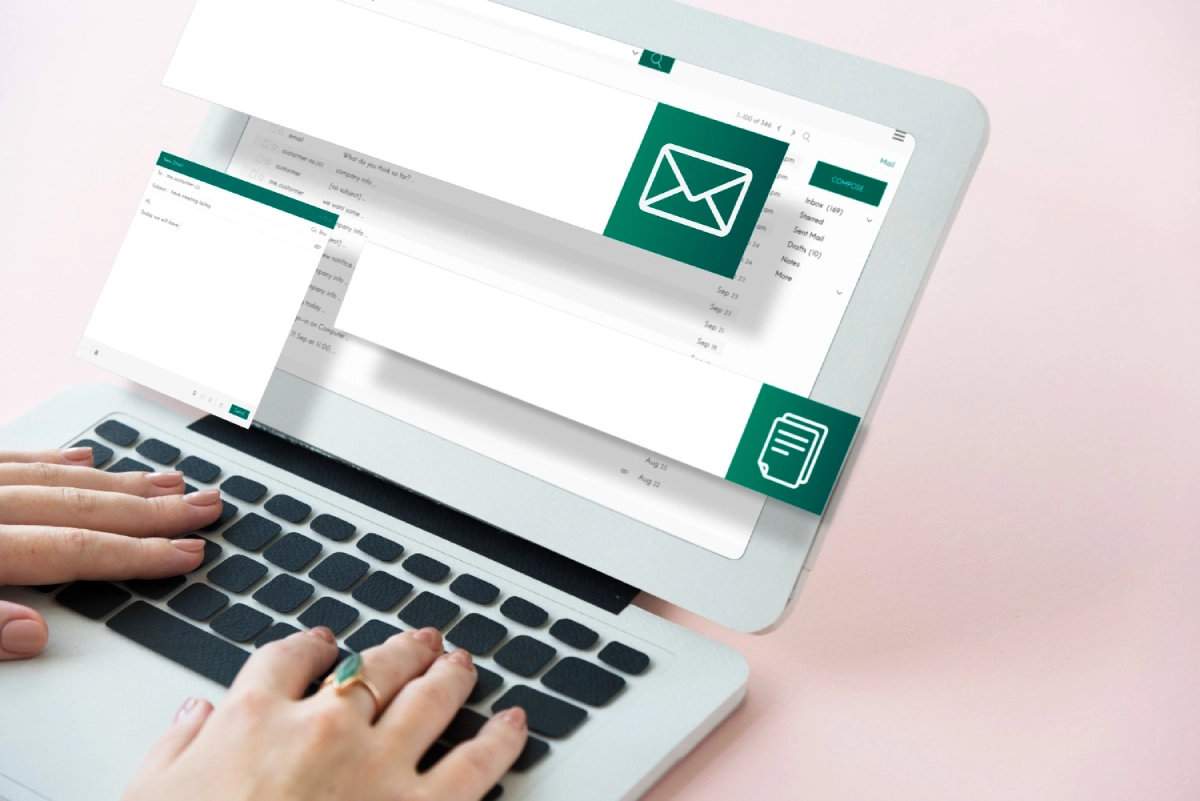

How to Send Emails Anonymously and Protect Your Identity
Introduction
In a world where our online presence is constantly under scrutiny, the need for privacy has never been more important. Whether it's protecting your identity, staying away from spam, or keeping sensitive information secure, sending emails anonymously can give you a much-needed layer of protection.
We’re living in an age where personal data is often more valuable than gold, and companies track everything you do online. That's why knowing how to send emails anonymously isn’t just a techie trick; it's essential for safeguarding your online presence. This guide is here to help, whether you're a complete beginner or someone looking to up your anonymity game. From protecting your identity to securing sensitive conversations, I’ve got you covered.
Let’s dive in and explore how you can send emails anonymously, why it matters, and how to keep your digital life private in a world that’s increasingly about sharing everything.
What Does "Sending Emails Anonymously" Really Mean?
When we talk about sending emails anonymously, we’re referring to the act of communicating without revealing your personal identity. This means no name, no email address tied to you, and ideally no traceable links to your digital footprint.
Anonymity and privacy are not the same. Privacy means protecting your personal information and sharing it only with people or platforms you trust. Anonymity, on the other hand, is about hiding your identity entirely. So while you might have privacy settings on your social media accounts, you could still be identifiable through other channels unless you take extra steps to hide who you are.
Why might you want to send an anonymous email? The reasons vary. You might want to whistleblow on a company without risking retaliation. Or perhaps you’re reaching out to a business, but you don’t want them to know who you are yet. In some cases, it’s just about personal privacy—keeping your online interactions separate from your real-world identity.
However, sending anonymous emails isn’t a free pass to do anything and everything.Legal and ethical limits must be taken into account. Using anonymous emails for harassment, fraud, or any unlawful activity is never okay. So, while anonymity can be a useful tool, always use it responsibly.
Why Should You Send Emails Anonymously?
Sending emails anonymously isn’t just for tech enthusiasts or privacy advocates—it’s a smart way to protect yourself online. Here’s why:
Protect Your Identity
In today’s world, personal information is gold. Keeping it private is critical to protecting yourself from identity theft, fraud, and unwanted exposure. Anonymously sending emails helps keep your identity hidden from prying eyes—whether they’re marketers, hackers, or even well-meaning friends who don’t need to know your business.
Prevent Spam & Unsolicited Messages
Ever noticed how you suddenly start receiving all sorts of emails after signing up for something online? It’s like a digital invasion. When you send anonymous emails, it’s easier to avoid being bombarded with spam. No one can trace your address or use it to fill up your inbox with irrelevant messages.
Secure Communication for Sensitive Topics
At times, you may need to discuss sensitive topics without revealing your identity. Whistleblowing, sending anonymous feedback, or reporting problems without fear of retaliation all require anonymity. It’s a shield for when you need to speak up but remain protected.
Avoid Tracking & Surveillance
Companies, websites, and even governments often track your online activities. They collect data to create profiles and target you with ads or other content. When you send an anonymous email, you reduce the risk of being tracked or surveilled. It’s like leaving no footprints in the sand.
In a time where privacy is more threatened than ever, knowing how to protect your identity and communicate safely is crucial. And as you’ll see in this guide, it’s not just for experts—anyone can do it.
How to Send Emails Anonymously: Beginner Methods
If you're new to the idea of sending emails anonymously, don't worry! There are simple methods you can use to get started. Here are two popular ways to protect your identity when emailing:
Using Temporary or Disposable Email Services
Disposable email services are a quick and easy way to send emails anonymously without needing to sign up for a full account. These services allow you to generate an email address that’s temporary—once you’re done, it disappears, leaving no trace behind.
Some popular disposable email services include:
- ProtonMail
- Guerrilla Mail
- Temp-Mail2
These services are usually super simple to use:
- Visit the website.
- Create a temporary email address.
- Send your email without revealing your identity.
For example, if you need to send a quick, anonymous email with no personal attachment, setting up a Temp-Mail account is a breeze. Just visit the site, grab an email address, and you’re good to go.
Using a VPN and Anonymous Email Providers
If you're looking for a little more security and privacy, using a VPN (Virtual Private Network) combined with an anonymous email provider is a great next step. A VPN hides your real IP address, making it harder for anyone to trace your location or identify you.
For this method, services like ProtonMail, Tutanota, and Mailfence are excellent. Here’s how you can combine a VPN with these services:
- Connect to a VPN: Use a trusted VPN service (like NordVPN or ExpressVPN) to mask your IP.
- Sign up for an Anonymous Email Account: Register for a service like ProtonMail that doesn’t require personal details.
- Send Your Email Securely: With your VPN activated, your email will be sent without exposing your true location.
Why is this method better
Combining a VPN with an anonymous email provider ensures extra protection from potential tracking or surveillance. This layered approach makes it much harder to trace the email back to you.
Advanced Techniques for Sending Emails Anonymously (Intermediate-Expert Level)
For those who want to take their email anonymity to the next level, there are some advanced techniques that offer stronger security. These methods might require a bit more technical know-how, but they’re worth exploring if you need to send emails securely and without leaving a trace.
Using PGP Encryption for End-to-End Security
If you're serious about email security, PGP (Pretty Good Privacy) encryption is the way to go. PGP encrypts the contents of your email, ensuring that only the recipient (who has the corresponding decryption key) can read it.
Here’s how you can use PGP with anonymous emails:
- Install a PGP-compatible email tool: Many email services like ProtonMail or Thunderbird support PGP.
- Generate a PGP key pair: This key pair allows you to encrypt and decrypt messages.
- Encrypt your email: Before sending, use your encryption software to secure the message.
- Send the email: Only the recipient who has the decryption key can unlock and read your email.
If you’re familiar with encryption and have a bit of technical experience, this is a great option for sending highly confidential emails.
The Role of the Onion Router (TOR)
Another powerful tool for email anonymity is TOR (The Onion Router). TOR is a free software that routes your internet traffic through multiple servers, hiding your IP address and encrypting your traffic. Using TOR in combination with an anonymous email service adds an extra layer of security, making it incredibly difficult for anyone to trace your email back to you.
Here’s how you can use TOR to send anonymous emails:
- Download and Install the TOR Browser: TOR routes your internet traffic through a series of encrypted layers, making it hard to trace your online activity.
- Access an Anonymous Email Service: Use services like ProtonMail or Tutanota through the TOR browser to send emails.
- Send Your Email Anonymously: With TOR masking your IP, your email will be nearly impossible to trace.
TOR + Email: By combining TOR with an anonymous email service, you're ensuring that both your identity and email content are protected.
Tools and Services for Sending Emails Anonymously
There are several tools and services available to help you send anonymous emails securely. Whether you’re just starting out or are looking for advanced options, here are some of the best choices for maintaining your privacy:
Best Anonymous Email Providers
- ProtonMail
ProtonMail is a popular choice for anonymous emailing. It offers end-to-end encryption, meaning only you and the recipient can read the email. No personal information is required to sign up, making it a great option for privacy-conscious users.
- Tutanota
Tutanota is another excellent provider for anonymous email services. It encrypts both the subject and body of the email, ensuring your messages remain private. Plus, Tutanota is easy to use, with an anonymous signup process that doesn’t require personal details.
- Mailfence
Mailfence is a secure email service that also supports PGP encryption. It allows you to send private emails and has features like two-factor authentication for extra security.
- Guerrilla Mail
If you need to send a one-off anonymous email, Guerrilla Mail is a solid option. It’s temporary and doesn’t require any personal details to set up. Just create an email, send it, and the address disappears.
- AnonEmail
For quick and simple anonymous emailing, AnonEmail allows you to send emails without revealing your identity. It's easy to use but comes with some limitations in terms of security.
Conclusion: Protect Your Identity, Send Emails Securely
In today’s digital world, protecting your identity and privacy is more important than ever. Whether you’re sending sensitive information, communicating anonymously for personal reasons, or simply avoiding unwanted tracking, knowing how to send emails anonymously is an essential skill.
We’ve covered everything from beginner methods, like disposable email services and VPNs, to more advanced techniques like PGP encryption and TOR. Each method has its own strengths, so you can choose the one that best suits your needs.
Remember, email anonymity isn't just about using the right tools—it’s also about following best practices, such as avoiding personal information, using disposable numbers, and staying low-profile. The more cautious you are, the more secure your anonymous communications will be.
As privacy concerns continue to grow in the digital age, it's up to you to take control of your online presence. So take a moment to review your email privacy practices, consider using one of the services mentioned here, and start sending secure, anonymous emails today!
FAQs (Frequently Asked Questions)
How can I send an email anonymously for free?
You can use services like ProtonMail, Guerrilla Mail, or Temp-Mail to send emails anonymously for free. These platforms don’t require personal information to sign up and allow you to send temporary or secure emails without revealing your identity.
Can I send encrypted anonymous emails?
Yes, you can. To encrypt your anonymous emails, you can use tools like PGP or services like ProtonMail and Tutanota that offer built-in encryption. This ensures that your email content remains private and can only be read by the intended recipient.
Are anonymous emails traceable?
While anonymous email services like ProtonMail and Tutanota are designed to make it difficult to trace emails back to the sender, nothing online is 100% untraceable. To maximize your anonymity, it’s recommended to use these services with a VPN or TOR.
What’s the best VPN for email anonymity?
Some of the best VPNs for email anonymity include NordVPN, ExpressVPN, and CyberGhost. These services offer high encryption, a large number of servers, and a no-logs policy, helping to keep your identity safe while sending emails.
Related Articles :-
- Marketing Design Essentials: How to Create Visuals That Convert
- Top Market Intelligence Tools to Stay Ahead of Your Competitors
- Temporary Mailboxes: Secure, Disposable Email Solution
- How to Detect and Remove Scam Emails from Your Inbox




